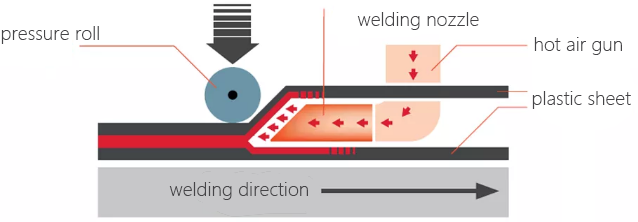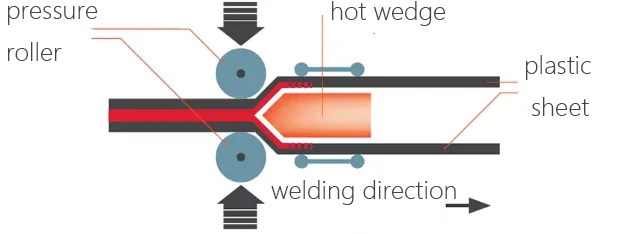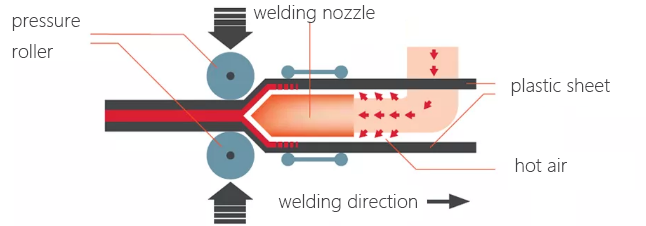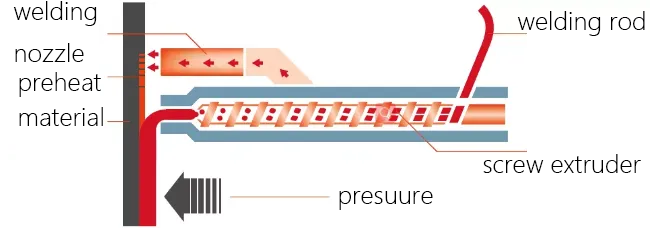+86 512 5879 0108
+86 512 5879 0108
NEICO is a supplier specializing in the production of plastic welding tools. Today, we will introduce to you the common plastic welding process
Plastic, a lightweight and versatile material, has become an integral part of our daily lives. From packaging materials to high-tech products, plastics are used in a wide range of applications, and their convenience and economic benefits make them an important part of modern industry.
The main components of plastics are polymers, large molecules formed through chemical reactions that can exhibit a variety of physical properties under different conditions. For example, thermoplastics can soften and reshape when heated, while thermosetting plastics, once formed, do not change shape even at high temperatures. Each of these two plastic types has its own unique application areas, from simple household products to complex industrial components, plastics can provide an economical and practical solution.
With the progress of science and technology, the development of engineering plastics and functional plastics has brought new possibilities for the application of plastics. These high-performance plastics not only have the advantages of traditional plastics, but also meet higher technical requirements, such as high temperature resistance, chemical corrosion resistance and radiation resistance. These properties make engineering plastics and functional plastics play a key role in areas such as aerospace, medical devices and electronics.
Common welding processes are as follows:

The advantage of hot air welding is its ability to provide uniform heating and strong welding strength, which is especially important for products that require water resistance and sealing. For example, in the automotive industry, hot air welding is used to make fuel tanks, air pipes, and other critical components. In the packaging industry, it is used in the manufacture of various containers and films to ensure the safety and freshness of products.

The hot wedge welding technique is an efficient welding method, especially suitable for the connection of thick materials. The core of this technology lies in the hot wedge, which is heated directly through the heating tube and transfers the generated heat directly to the area of the workpiece to be welded. This direct heating method ensures that the heat is concentrated and efficient, making the welding process more stable and controllable.

Hot air wedge welding technology works by using hot air to preheat the welding area to increase the temperature and plasticity of the material. The hot wedge section is then responsible for the actual welding process, which is usually a metal wedge component heated to a specific temperature that allows precise control of the welding temperature and pressure. Hot air also plays a cleaning role in the welding process, which can remove impurities and moisture in the area to be welded, thereby improving the quality of welding.

Pendulum welding, a kind of precise and efficient welding technology, has been widely used in manufacturing industry in recent years. The core of this technology is the use of the same material as the substrate electrode, ensuring that the physical properties of the weld and the substrate are consistent. Before welding, both the electrode and the substrate surface need to be preheated by hot air to improve welding efficiency and quality.

Speed welding process is a key technology in modern manufacturing industry, which can improve production efficiency, reduce costs, and improve product quality. This process usually requires the use of a specially designed rapid welding nozzle, so that the surface of the workpiece to be welded can be preheated to the appropriate temperature in a short time, so that the material reaches a plasticized state. Then, by applying downward pressure, the two parts can be firmly joined together.

The core of this technology is to preheat the substrate through hot air and then extrude the plasticized electrode material to form a strong weld connection. Extrusion welding not only improves the welding efficiency, but also ensures the quality and strength of welded joints.
ZHANGJIAGANG NEICO TOOLS CO., LTD.
Add.: NO.17-18, Building 6, International Trade City, Tangqiao Town, Zhangjiagang 215600, Jiangsu, China
Mob: +86 139 1570 3340
Tel.: +86 512 5879 0108
Fax: +86 512 5879 0108
Skype: neicotools
E-mail: sales@neicotools.com
Web: www.neicotools.com
Products
Site Map